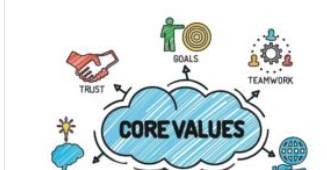Bulking Up Your Business- Smarter is Stronger!
Are You and Your Team Members Getting Smarter?
The other day I ran into a former co-worker. We were able to catch up in about five minutes – a “memory conversation” if you will. I realized pretty quickly there hadn’t been a lot of professional growth for him since we worked together. He seemed satisfied to be in the same job and apparently saw no real need to improve his skills or stretch himself professionally.
If you’re in an organization that isn’t promoting culture and engagement it’s easy to become disengaged in that “toxic” environment. On the other hand, the smartest companies today strive to hire employees eager to grow themselves because they know it will help the business grow. Great leaders have the confidence to surround themselves with people who are smarter than they are – people who add value to every aspect of their job. It makes sense. Research shows when people get the tools and training to do their jobs well they feel supported, are engaged and more loyal.
TAKE CHARGE OF YOUR PROFESSIONAL DEVELOPMENT
Regardless of whether your company has a commitment to professional development, ask yourself, “How do I as an individual contributor to an organization become more valuable and a greater asset to the group?” Professional development gives you the ability to speak to different topics in conversation – not only with current or potential clients but also with your fellow employees. It can also put you a path to leadership opportunities, increase your productivity or put you on a path to a boost in compensation.
It’s important you personally seek out opportunities. For example, put together a group of accountability partners you meet with on a monthly basis. Discuss topics at hand or ask to be challenged in your line of thinking. Seek out training and development opportunities for yourself – maybe after hours or on the weekends.
Push yourself to learn something about the business with which you’re not currently familiar. Think about how you can become better versed in cross-functional tasks within the company. The more diverse you make your area of expertise the greater the growth opportunity.
Perhaps you attend a conference and when you return you make it your responsibility to deliver a “CliffsNotes” version to your team. You share your knowledge with others which shows value, and in turn, increases everyone’s value. It also provides a “win-win” for the company to justify the conference expense.
Taking control of your professional development isn’t always easy. But if you stay motivated you’ll find the benefits are immensely rewarding.















